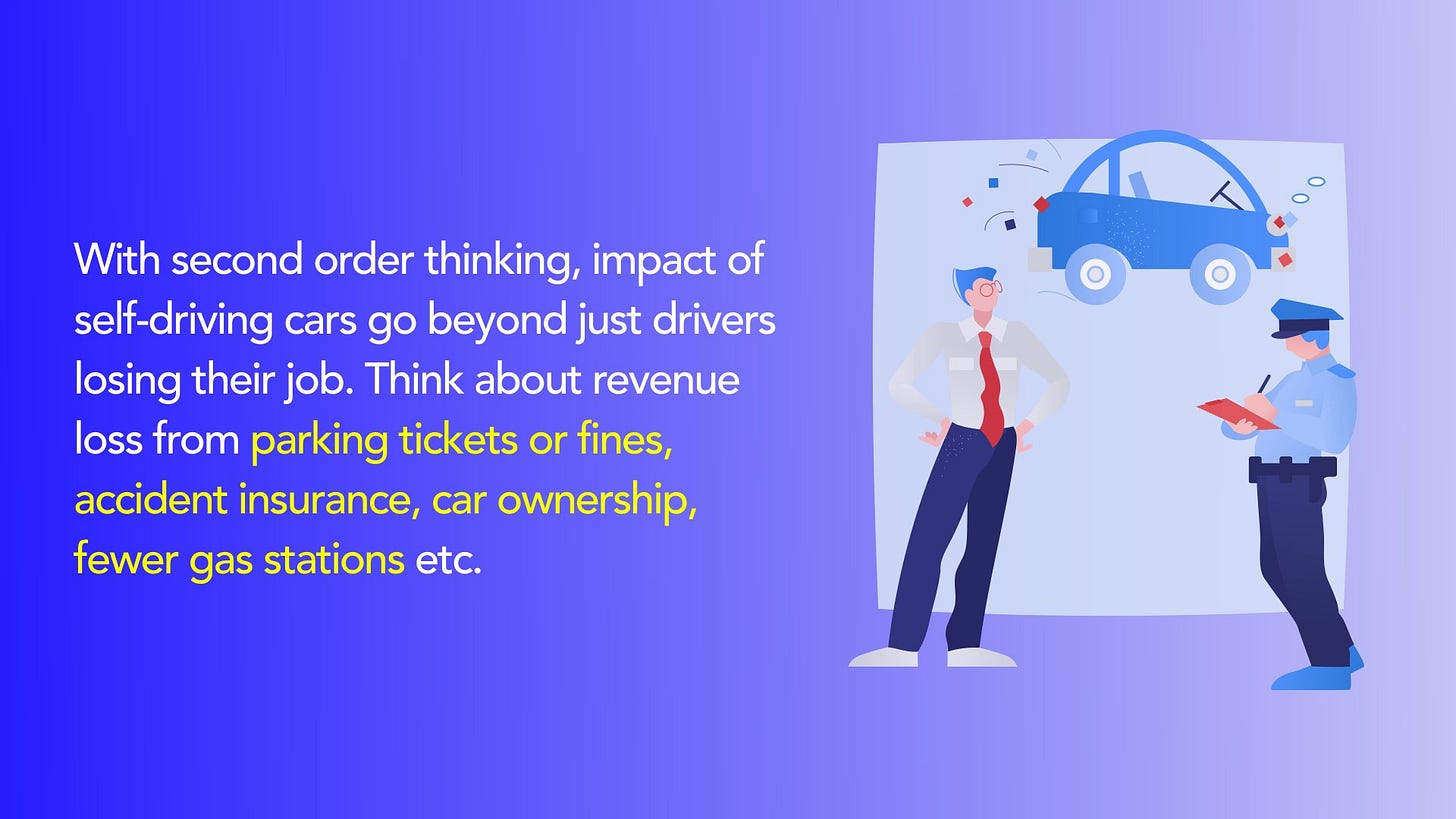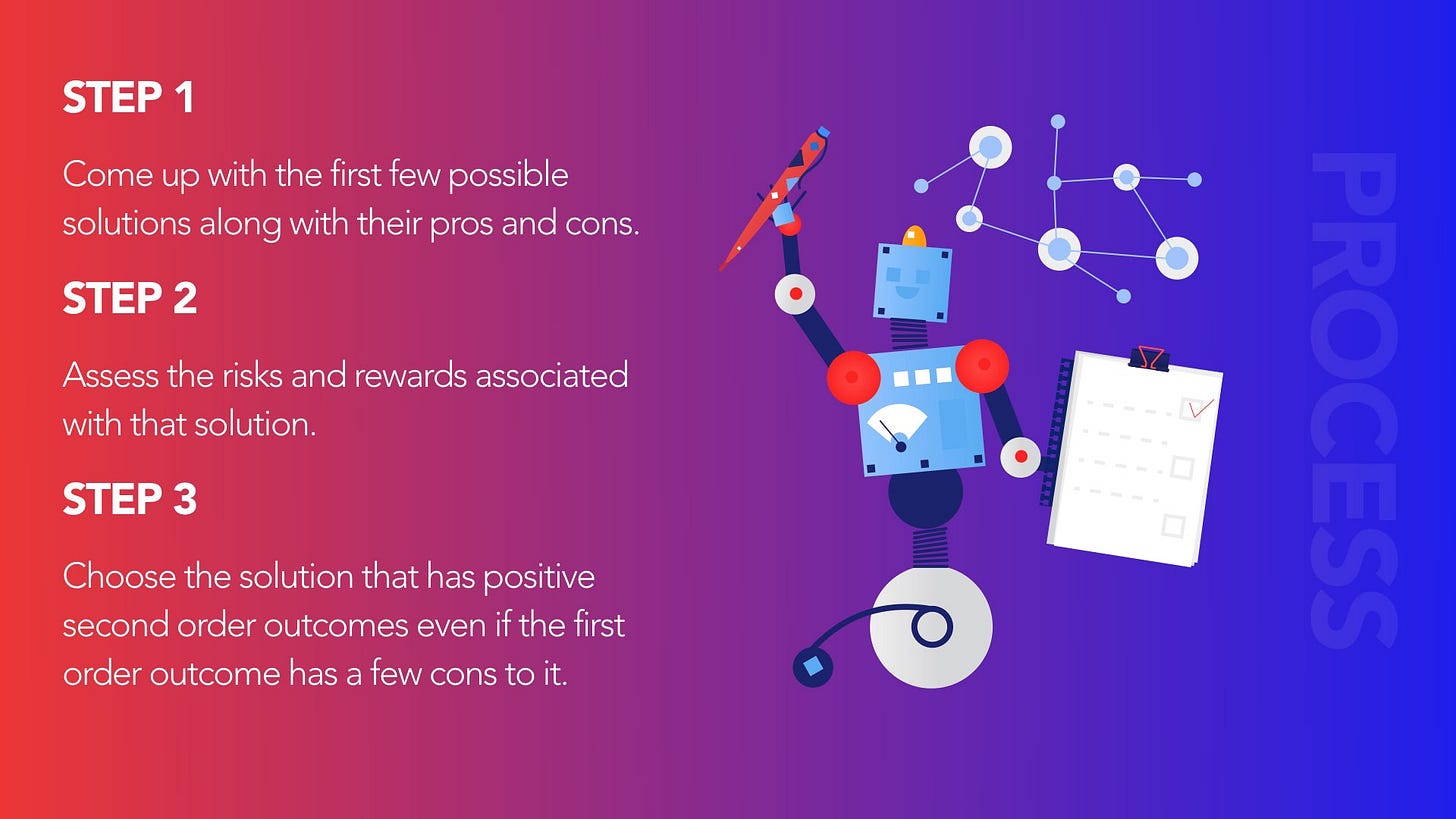Second Order Thinking
In 1935, when Sugarcane crops in Australia were being ruined by Cane Beetles, the government panicked and introduced the Cane Toad to Australia. Given the urgency at the time and Sugarcane crops being one of Australia’s biggest sources of income, it seemed like a quick and necessary solution.
Years passed and the Cane Beetle population didn’t fall as significantly as expected but there was a new problem that started popping up. It was the Cane Toads.
With their poisonous skin and no natural predators, the Cane Toad population grew rapidly and started disturbing the biodiversity of the region. Soon, the toads started taking resources away from the native Australian fauna, thereby greatly reducing their ability to survive.
From the initial release of 102 toads, today Australia struggles to find ways to combat an army of 200 million Cane Toads.
A problem much bigger than the Cane Beetles problem.
Wildlife Expert & DMT Evangelist, Joe Rogan on Cane Toads.
The Cane Toad problem of Australia was an avoidable disaster, if only the administration at the time had practiced an age old idea called the Second Order Thinking.
What is second order thinking?
When you only look at only the immediate ramifications of your actions without considering future consequences arising out it, that is first order thinking. Second order thinking is the ability to look beyond the initial consequences of an action.
Illustrations courtesy icons8.com/ouch
With first-level thinking everyone reaches the same conclusions. The road to out-thinking people can’t come from first-order thinking. It must come from second-order thinking. Extraordinary performance comes from seeing things that other people can’t see.
Shane Parish - fs.blog
Example: Impact of self-driving cars
Most people when they hear about the impact of self-driving cars, they will point towards the obvious one - drivers losing their jobs. But second-order thinkers know that there is more to the situation, so they ask themselves one question - “then what?”.
With that simple question, they can start exploring non-obvious implications of self-driving cars like parking space management, car ownership rates, rate of accidents, insurance rates + policy changes etc.
Read Benedict Evans’ excellent post on self-driving cars and their possible impact
First-order thinking is like running a hurdle race where your goal/intent is to get over the problem right in front of you as soon as possible (Drivers losing their jobs). Second order thinking on the other hand is like playing chess with a skilled opponent and predicting the probability and direction of their next 10 moves (what will be the impact on accident insurance when probability of human error is greatly reduced? Would people want to own cars when they don’t need to drive them? etc).
Illustrations courtesy icons8.com/ouch
First-level thinking says “it’s a good company; let’s buy the stock.” Second-level thinking says, “It’s a good company, but everyone thinks it’s a great company, and it’s not. So the stock’s overrated and overpriced; let’s sell.”
First-level thinking says, “The outlook calls for low growth and rising inflation. Let’s dump our stocks.” Second-level thinking says, “The outlook stinks, but everyone else is selling in a panic. Buy!”
- Howard Marks, Investor & Author of The Most Important Thing
Get 1-2 FREE mental models or thinking hacks every month to your inbox.
Understand that there is a big difference between second order thinking and just being a contrarian, while the former is about analyzing/predicting subsequent implications of our decisions beyond the obvious ones and the latter is about just taking the other side of the bet.
Symptoms & incentives
Most first-order thinking is solving for the symptoms of a problem rather than the underlying factors causing those symptoms. For example, a grocery store with slow sales during the workweek might introduce discounted prices to increase consumer interest but the underlying problem here is that consumers are not available to come to the store on a work day.
So in this case a better solution might be to get listed on a local delivery app where the customers can order groceries anytime, seamlessly. This is better in the long-run even if it means that the store does not get the instant cash flow from discount sales.
This also gets into the realm of incentive planning where most focus is on immediate material rewards. A better approach would be thinking in terms of long-term sustainability, goodwill, buying preferences, market trends etc. While a discount as an incentive will work sometimes, you run multiple risks ranging from consumers getting used to only buying when there is a discount to a bigger competitor under-cutting you. A better incentive would be to make the customer’s buying experience seamless, have high-quality standards, be reliable, practice ethical pricing etc.
Getting started with second-order thinking
Implementation of second-order thinking can be as simple as regularly questioning possible impact of your decisions with - “Then what?”. However, like most mental models, this will work better if you build a cohesive system around it.
In essence, think of the process in this chronology:
First Order Thinking ⇒ First Order Consequence ⇒ Second Order Thinking ⇒ Second Order Consequence .. so on and so forth.
To keep things simple we will use the infamous Uber 2012 case to illustrate second order thinking.
Now let’s get started
(Step 1) Come up with the first few possible solutions along with their pros and cons.
A lot of drivers on the platform have stopped working during the storm, so Uber needs to get more drivers on the streets. Some strategies could be:
(a) Charge surge pricing
Cons:
User backlash over higher prices
Setting wrong incentives for the long-term
Increased costs for Uber in case there is a backlash
Pros:
More Uber cabs on the street
Reputation of availability and reliability even in severe conditions
(b) Give a fixed reward
Cons:
Non-linear incentive structure
Might not attract a lot of drivers
Pros:
No variables for users
Some incentive for drivers
(c) Prompt the customer to tip well (Uber didn’t allow tips in 2012)
Cons:
Incentive not guaranteed
Low interest from drivers
Fewer Uber cabs on the street
Pros:
Customers in complete control
Zero cost for Uber
(d) Do not do anything at all
Cons:
Loss of reputation amongst users.
Loss of potential revenue.
Little to no Uber cabs on the street
Pros:
Zero costs
(Step 2) Now assess the risks associated with that solution
To keep things simple, we will explore the solution that Uber actually used (Option a).
How does this solution impact other stakeholders?
What happens to my user’s costs?
How will this impact pricing strategies of local taxis and other operators?
Will this be in line with my personal or organisation’s code of conduct?
Is my reputation at stake here by charging people higher fares during a natural disaster?
Will this hamper user perception about Uber’s cabs being available at all times?
Can I make a different decision with fewer assumptions?
Can we just award the drivers working during the storm with some coupons or give them a fixed incentive out of Uber’s pocket?
How will other stakeholders view this decision?
Will I face user backlash because of higher fees?
Will my drivers expect surge pricing anytime there is an unusual circumstance?
Are monetary incentives the only reason drivers might choose to drive for Uber?
Will investors be happy with us covering the cost rising out of surge pricing for the customer?
(Step 3) Choose the solution that has positive second order outcomes even if the first order outcome has a few cons to it.
Given the circumstances, it is clear that surge pricing will not be in the best interest of Uber and its users. So we could look at options that work a little better like (b) and (c).
It is important that you consider options with positive second order consequences even if the first order consequences are not absolutely positive or even mildly negative for that matter.
Illustrations courtesy icons8.com/ouch
Final thoughts
Since this model can be used in both personal and business contexts, you’ll get much better at it with time.
Did you find this useful? Let me know with a “yes” or “no” in the comments section.
Your feedback really helps.
Once again, thanks for reading.
Keep it rational.





Great job!
Clear, concise writing.